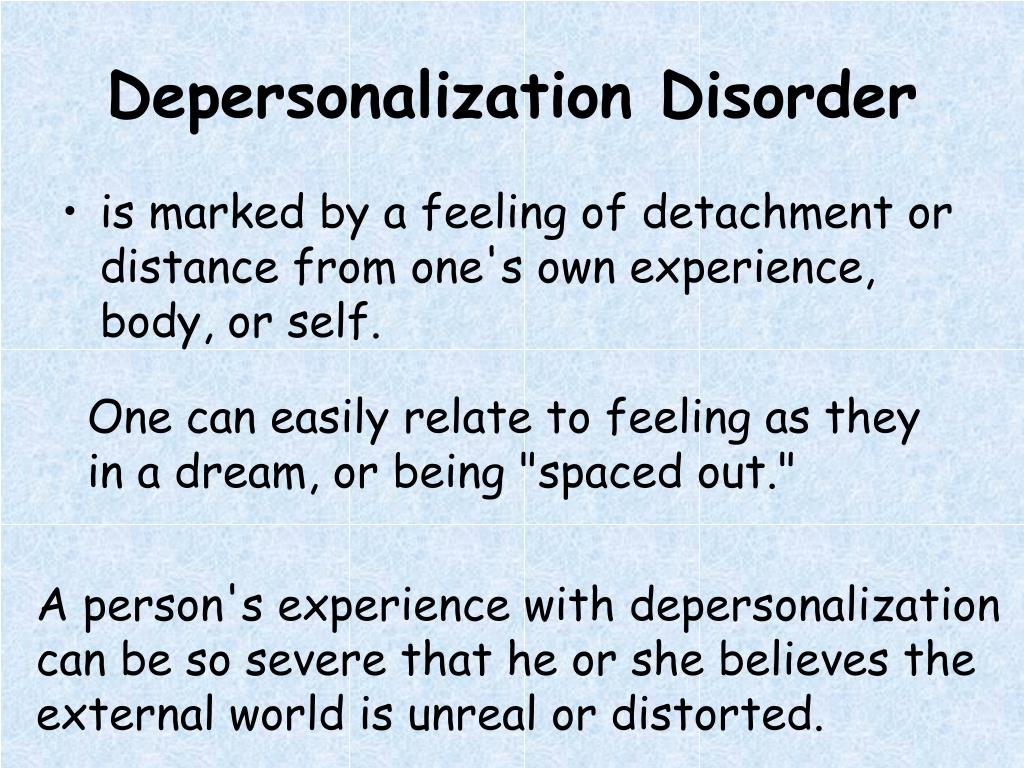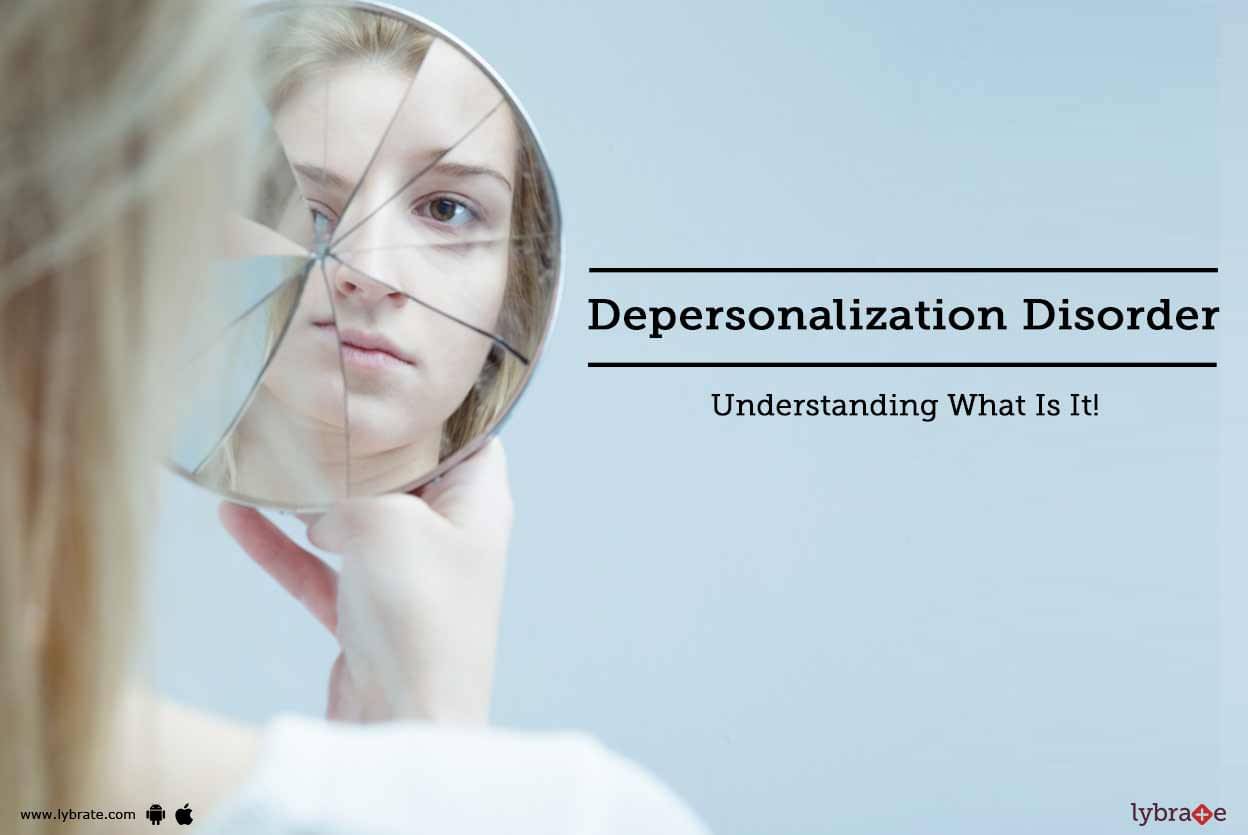

But at what point do these feelings start to signal a mental health condition? Remember, it’s normal to feel a little “off” or removed from the world sometimes. Read one person’s account of how it feels to experience depersonalization and derealization symptoms.
#DEPERSONALIZATION DISORDER MANUAL#
According to the most recent edition of the Diagnostic and Statistical Manual of Mental Disorders, close to 50 percent of adults in the United States will have an episode of depersonalization or derealization at some point in their lives, though only 2 percent meet criteria for a DDD diagnosis. This can add to feeling like you don’t exist or are simply “going crazy.”īut these feelings are likely more common than you think.


experiencing a distorted sense of time - the past may feel very recent, while recent events feel as if they happened long agoįor many people, DDD symptoms are hard to put into words and communicate to others.feeling like your surroundings aren’t real or seem flat, blurry, too far, too close, too big, or too small.feeling like a glass wall separates you from the world - you can see what’s beyond but can’t connect.having trouble recognizing surroundings or finding your surroundings hazy and almost dreamlike.difficulty attaching emotion to memories.feeling as if parts of your body are the wrong size.feeling as if you can’t control what you do or say.numbness in your mind or body, as if your senses are turned off.feeling detached from yourself, as if you have no actual self.feeling like you’re outside your body, sometimes as if you’re looking down on yourself from above.People with DDD can experience symptoms of just one or the other or both. Health Literacy Online: A Guide for Simplifying the User Experience.DDD symptoms generally fall into two categories: symptoms of depersonalization and symptoms of derealization. Department of Health and Human Services, Office of Disease Prevention and Health Promotion. Washington, DC: The National Academies Press. National Academies of Sciences, Engineering, and Medicine. Improving newborn screening laboratory test ordering and result reporting using health information exchange. Reference: Data from the Newborn Screening Coding and Terminology Guide is available here.Reference: MedGen Data Downloads and FTPĭata from the National Library of Medicine's Newborn Screening Coding and Terminology Guide is used to note if a disease is included on Federal or State recommendations for newborn screening testing.Kohler S, Gargano M, Matentzoglu N, et al., The Human Phenotype Ontology in 2021, Nucleic Acids Research, Volume 49, Issue D1, 8 January 2021, Pages D1207–D1217.ĭata from the National Center for Biotechnology Information's MedGen is used to provide genetic testing information available for a disease. Orphanet is an online database of rare diseases and orphan drugs. Reference: Access aggregated data from Orphanet at Orphadata.Reference: UMLS Vocabulary Standards and Mappings Downloadsĭata from Orphanet and Human Phenotype Ontology (HPO) are used to provide information on a disease's symptoms, genes, inheritance, population estimates, and more.The National Library of Medicine's Unified Medical Language System (UMLS) is used to classify and organize diseases and disease categories.


 0 kommentar(er)
0 kommentar(er)
